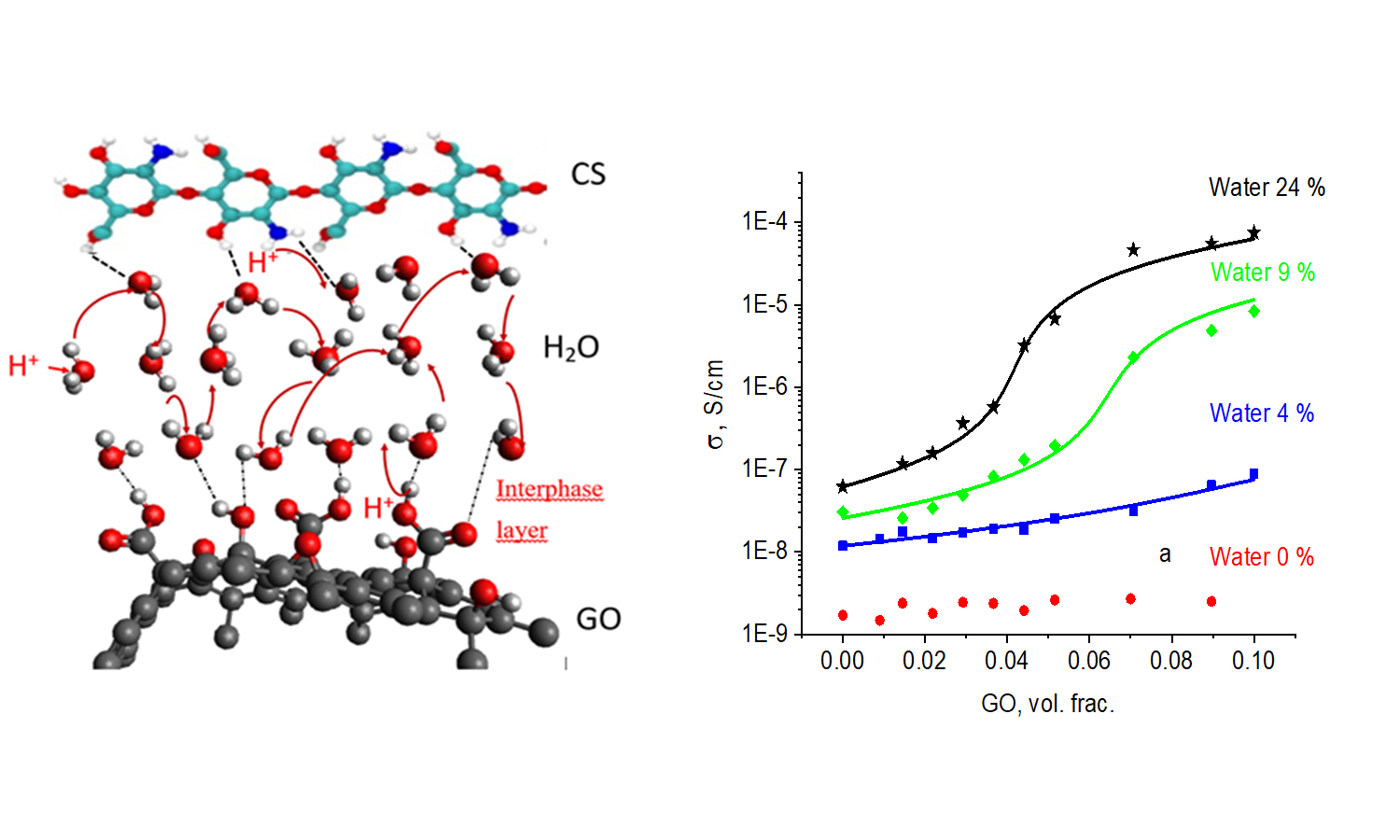Interphase percolation phenomena in chitosan-graphene oxide nanocomposites, the role of water content
Vol. 17., No.1., Pages 29-39, 2023
DOI: 10.3144/expresspolymlett.2023.3
DOI: 10.3144/expresspolymlett.2023.3
GRAPHICAL ABSTRACT

ABSTRACT
Herein, we report interphase percolation phenomena in chitosan-graphene oxide (CS-GO) nanocomposites as a function of water content. The dependencies of the DC conductivity and the static dielectric constant have been investigated in a wide range of GO concentrations (0–12 wt%) and water contents (0, 4, 9, and 24%). Fourier-transform infrared spectroscopy (FTIR), Raman spectroscopy and X-ray diffraction (XRD) measurements reveal the presence of strong interaction between the CS matrix and GO fillers. For annealed CS-GO films in a vacuum (no water content), the DC conductivity and dielectric constant do not depend upon the GO concentration. When the water content increases, a percolation phenomenon is now detected; by increasing water content, the percolation threshold shifts to a lower GO concentration. A three-phase model which includes the conductivities of CS and GO, and an interphase layer fits well DC conductivity data; this modelbased analysis suggests that upon increasing the water content, the conductivity of the interphase layer is higher than the one of both neat CS and GO. Water molecules at the interface drive a high-conductivity interfacial shell supporting a proton transfer mechanism; this mechanism is a plausible scenario for percolation in wet CS-GO nanocomposites. Our results may be of great importance in the applications of such nanocomposites in flexible electronics, biomedicine, proton exchange membranes, and sensors.




